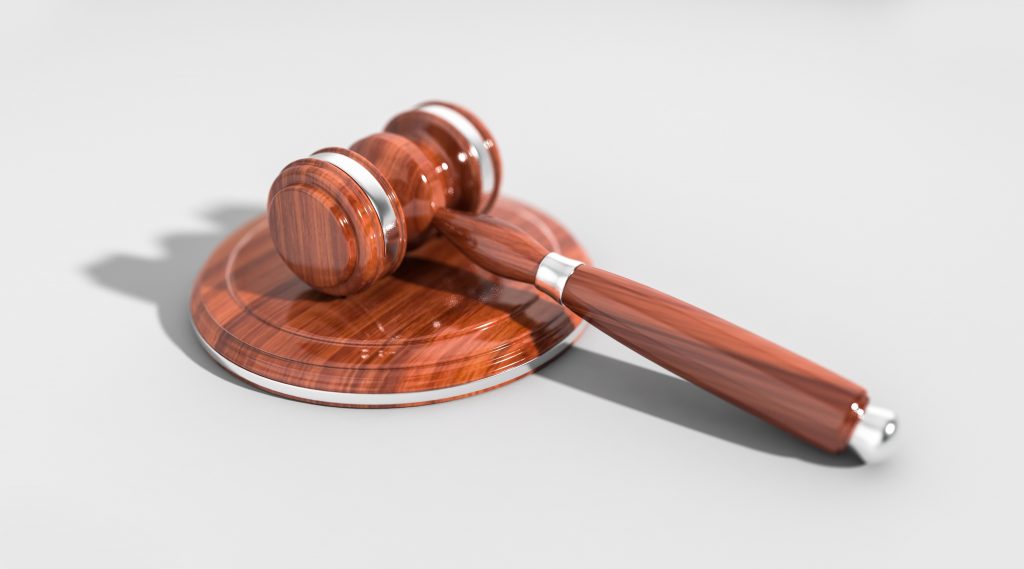 Businesses face many liability risks or risks of being sued. These include injuries to their employees on the job. Workers’ compensation is designed to address such injuries. In Louisiana, businesses in specific industries may agree to pool together with one another in order to “self-insure” these claims. This means that the businesses pay the claims from a specific fund rather than handle them through outside insurance companies. The concept of indemnity is important in these sorts of arrangements. Indemnity involves the paying back of money or the defense in court of one party by the other. Of course, money is not unlimited, and organizations providing may exclude certain coverage in particular situations. The business affected may not agree with this. The Fourth Circuit Court of Appeal recently considered such a dispute.
Businesses face many liability risks or risks of being sued. These include injuries to their employees on the job. Workers’ compensation is designed to address such injuries. In Louisiana, businesses in specific industries may agree to pool together with one another in order to “self-insure” these claims. This means that the businesses pay the claims from a specific fund rather than handle them through outside insurance companies. The concept of indemnity is important in these sorts of arrangements. Indemnity involves the paying back of money or the defense in court of one party by the other. Of course, money is not unlimited, and organizations providing may exclude certain coverage in particular situations. The business affected may not agree with this. The Fourth Circuit Court of Appeal recently considered such a dispute.
Two employees of The Columns Hotel in New Orleans got into a physical altercation while at work. One of them was injured and sued the hotel and his coworker. As part of this same lawsuit, the Columns Hotel (“the hotel”) brought in the Louisiana Restaurant Association Self-Insurers Fund. The hotel claimed that the indemnity agreement between the parties should have applied in this situation. The fund disagreed, filing for summary judgment to have the court dismiss the claim on the basis that the agreement was not insurance. The trial court agreed and dismissed these particular claims. The hotel appealed.
The issue for the Fourth Circuit Court of Appeal ultimately dealt with how to interpret the indemnity agreement. Although the hotel argued that insurance law should apply to this contract, Louisiana law specifically excludes self-insurance organizations from the Louisiana Insurance Code. La. R.S. 23:1195(A)(1). Thus, the Fourth Circuit looked at the indemnity agreement between the hotel and the fund itself to determine how it should be applied. Contracts in Louisiana must be interpreted only to determine what the parties intended the terms to mean. La C.C. art 2045 Here, the parties disagreed as to what situations would be excluded from coverage by the fund. The exclusions the fund relied on were bodily injury, as well as assault and battery. The exception for bodily injury excluded from coverages situations where someone was injured by actions that should have been reasonably expected to cause such an injury. The court applied this to the fight between the employees. Their actions during the altercation would have been reasonably expected to cause injury. Thus, the Fourth Circuit found that the bodily injury exclusion would have applied. Therefore, the fund had been entitled to summary judgment on that point. The other exclusion was that of assault and battery. The exclusion includes reference to bodily injury caused by assault and battery. In Louisiana, battery is a “harmful or offensive contact” and assault is any action that would threaten such contact. Lawson v. Straus, 750 So. 2d 234 (La. Ct. App. 1999). Under these definitions, the fight between the employees would be considered assault and battery. Thus the agreement would not cover the se bodily injuries. Because these two exclusions applied to the situation, the Fourth Circuit found that summary judgment had been correctly granted.
 Louisiana Personal Injury Lawyer Blog
Louisiana Personal Injury Lawyer Blog


 Benjamin Franklin had good reason to make the statement, “neither a borrower nor a lender be.” The potential for risk on either side of the transaction is significant. Be it the likelihood of not getting paid, or the possibility that you will not be able to repay the debt, many find that it is better to avoid the perils of money lending altogether. But that is just not practical. The way big plans are realized is often with money we do not yet have. And loaning money at interest is usually a great short-term investment, if you have the cash to spare. How do we assure our debt agreements will hold up in court?
Benjamin Franklin had good reason to make the statement, “neither a borrower nor a lender be.” The potential for risk on either side of the transaction is significant. Be it the likelihood of not getting paid, or the possibility that you will not be able to repay the debt, many find that it is better to avoid the perils of money lending altogether. But that is just not practical. The way big plans are realized is often with money we do not yet have. And loaning money at interest is usually a great short-term investment, if you have the cash to spare. How do we assure our debt agreements will hold up in court? When a party to a lawsuit waits too long to respond to a lawsuit or flat out declines to respond, courts have the ability to resolve the case with a default judgment. This default judgment resolves the case and the non-responding party must live with the court’s decision. While not ideal, it is a needed mechanism for times when a party does not comply with the rules. With the help of an excellent attorney an injured driver won his lawsuit when a Leesville vehicle repair shop failed to properly respond to his lawsuit.
When a party to a lawsuit waits too long to respond to a lawsuit or flat out declines to respond, courts have the ability to resolve the case with a default judgment. This default judgment resolves the case and the non-responding party must live with the court’s decision. While not ideal, it is a needed mechanism for times when a party does not comply with the rules. With the help of an excellent attorney an injured driver won his lawsuit when a Leesville vehicle repair shop failed to properly respond to his lawsuit. After a hard fought jury trial, an appeal can be expected. But, what cannot be anticipated is a transcribing error by the court that renders the judgment as invalid and makes any appeal impossible. Excellent attorneys can catch errors by other parties and avoid multiple extra steps before a lawsuit can be resolved. That was the case here as mismatching damage award classification labels extended a lawsuit well beyond its anticipated end.
After a hard fought jury trial, an appeal can be expected. But, what cannot be anticipated is a transcribing error by the court that renders the judgment as invalid and makes any appeal impossible. Excellent attorneys can catch errors by other parties and avoid multiple extra steps before a lawsuit can be resolved. That was the case here as mismatching damage award classification labels extended a lawsuit well beyond its anticipated end. If you and the opposing party in your lawsuit reach a settlement agreement, it might seem like your legal battle is over. However, trouble can arise if the other party does not do what they promised to do. This is the situation Cheri Gardner found herself in following a car wreck and the resulting settlement with State Farm.
If you and the opposing party in your lawsuit reach a settlement agreement, it might seem like your legal battle is over. However, trouble can arise if the other party does not do what they promised to do. This is the situation Cheri Gardner found herself in following a car wreck and the resulting settlement with State Farm.  Employment discrimination can take many forms. One common form is gender discrimination. However, an employer may be able to avoid liability if they can provide legitimate and nondiscriminatory reasons why they decided to hire someone else that are not based on the candidate’s gender.
Employment discrimination can take many forms. One common form is gender discrimination. However, an employer may be able to avoid liability if they can provide legitimate and nondiscriminatory reasons why they decided to hire someone else that are not based on the candidate’s gender. Generally, terminating an employee on the basis of race is a violation of the Louisiana Employment Discrimination Law, which is similar to Title VII of the Civil Rights Act of 1964.
Generally, terminating an employee on the basis of race is a violation of the Louisiana Employment Discrimination Law, which is similar to Title VII of the Civil Rights Act of 1964.  Often times during a lawsuit, cases involve a classic “battle of experts,” where each side presents an expert with an opinion which differs from their respective opponent’s side. The recent Jefferson Davis Parish case involved this exact situation.
Often times during a lawsuit, cases involve a classic “battle of experts,” where each side presents an expert with an opinion which differs from their respective opponent’s side. The recent Jefferson Davis Parish case involved this exact situation. The “burden of proof” may be a familiar concept to everyone, even those inexperienced with the courts. The idea is that the party in a lawsuit holding the “burden of proof” is tasked with providing evidence that reaches the level of proof required to meet the burden. In car accidents, where amount of fault decides how damages may be determined, this burden is especially important. The evidence in some car accidents makes the division extremely obvious, both as to fault and to extent of damage. Other cases, however, especially when the accident is relatively minor, may not be so clear cut. In an unpublished opinion, the Louisiana Third Circuit Court of Appeal considered such a case where the burden of proof was the main issue.
The “burden of proof” may be a familiar concept to everyone, even those inexperienced with the courts. The idea is that the party in a lawsuit holding the “burden of proof” is tasked with providing evidence that reaches the level of proof required to meet the burden. In car accidents, where amount of fault decides how damages may be determined, this burden is especially important. The evidence in some car accidents makes the division extremely obvious, both as to fault and to extent of damage. Other cases, however, especially when the accident is relatively minor, may not be so clear cut. In an unpublished opinion, the Louisiana Third Circuit Court of Appeal considered such a case where the burden of proof was the main issue.  In Louisiana, if someone does work to your home and you find the work to have been completed unsatisfactorily, you have a one-year prescription period to bring the issue to court. However, what does one do if problems from this work do not appear right away? Considering the statute that allows a one-year prescription period at the first notice of damage, what exactly is noticing damage? Is it formally reporting the issue or simply remarking on an observation? The Louisiana Fifth Circuit Court of Appeals recently decided a case on appeal from Jefferson Parish that answered such questions.
In Louisiana, if someone does work to your home and you find the work to have been completed unsatisfactorily, you have a one-year prescription period to bring the issue to court. However, what does one do if problems from this work do not appear right away? Considering the statute that allows a one-year prescription period at the first notice of damage, what exactly is noticing damage? Is it formally reporting the issue or simply remarking on an observation? The Louisiana Fifth Circuit Court of Appeals recently decided a case on appeal from Jefferson Parish that answered such questions.